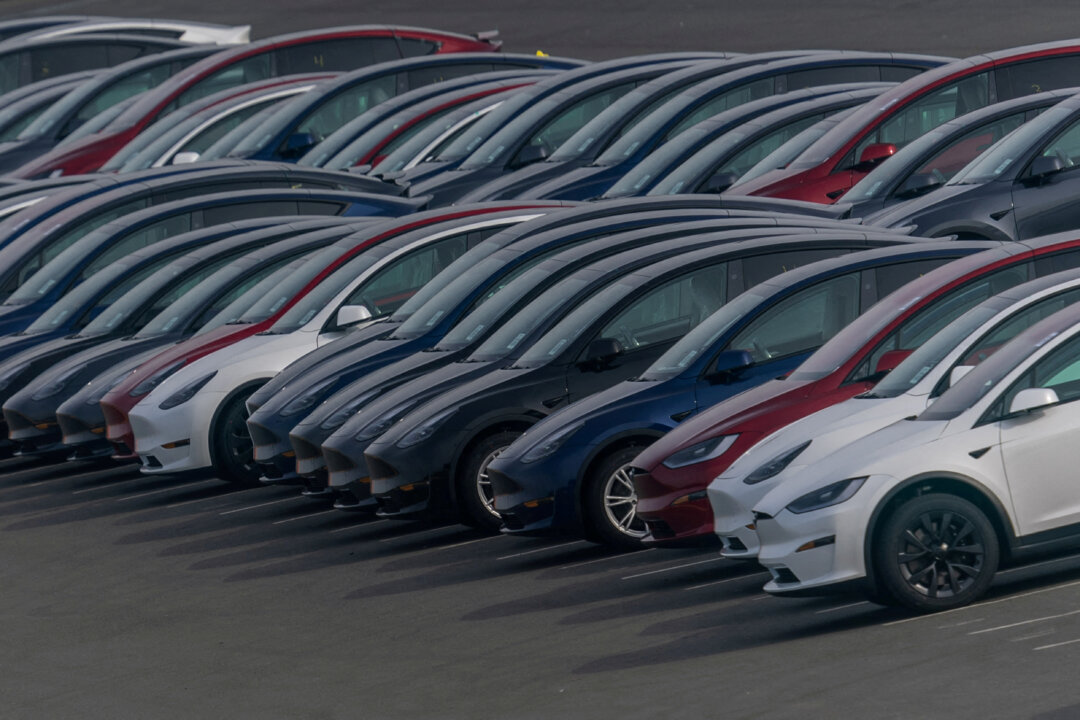


New vehicle prices across the United States dipped over three percent in the past year as sellers offered more incentives to spruce sales.
The average transaction price (ATP) of a new vehicle was $47,401 in January 2024, a “remarkable” 3.5 percent decline from the same month last year, according to an analysis by automotive research company Kelley Blue Book. The decline was attributed to automakers and dealers providing higher discounts in a bid to keep up the pace of sales.
Even with lower prices, the sales pace was 15 million in January this year, down from 16.1 million in December. In January, discounts and incentives were higher than in December and were almost double compared to a year back.
Erin Keating, executive analyst for Cox Automotive, said that “it is common to see lower transaction prices and sales in January, as December typically is a hot month for luxury vehicle sales.”
However, “the year-over-year new-vehicle ATP decline of 3.5 percent is notable. Prices have been trending downward for roughly six months now as automakers are sweetening deals to keep the sales flowing.”
Both luxury and non-luxury brand vehicles saw prices decline in January month-over-month. The share of luxury vehicles in overall car sales slightly dipped last month.
For non-luxury brand vehicles, “inventory levels have been increasing for the past year, shifting the market to favor buyers who are enjoying more choices, more discounts, and lower prices.”
Electric vehicle (EV) transaction prices also declined in January year-over-year, with the average price for a new EV falling 10.8 percent to $55,353 for the month. EV ATP averaged $53,611 in December, the lowest in 12 months.
“The overall narrative is unchanged—EV prices have come down significantly in the U.S. in the past year, led by price cuts at Tesla,” said Mark Strand, senior director of Business Intelligence at Cox Automotive.
Over the past year, the price of the highest volume EV in the market, the Tesla Model Y, fell by more than 21 percent.
Kelley Blue Book noted that incentives for EV purchases jumped by over three-fold in the past year. In January 2024, Volkswagen was offering nearly 17 percent of ATP in average incentives for its popular EV model ID.4, up from 6 percent a year back.
Incentives for Nissan Leaf jumped from 8 percent to nearly 18 percent during this period, while those for the Hyundai Ioniq5 spiked from less than 3 percent to over 18 percent.
Kelley Blue Book points out that the incentives were driven by slowing EV sales, which forced automakers and dealers to offer more discounts in a bid to push up sales numbers.
2024 Car Prices
The price of new cars is typically determined by inventory, trade-in vehicle value, manufacturer incentives, and dealer discounts. All these factors saw disruptions over the past years.As far as 2024 is concerned, experts predict the price decline will continue this year. In an interview with GoBankingRates, David Meniane, CEO of CarParts.com, said that car prices “might drop in 2024.”
A key factor that could lead to more price decline is an oversupply of new cars, he said. “One recent report estimates that global car production will exceed sales by 6 percent this year, creating a surplus of 5 million vehicles that will receive price cuts to facilitate their sale.”
The timing of purchasing a car could also affect the price, he stated. “For example, October to January is typically the best time to buy a vehicle, especially during the month of December.”
“If you’re a prospective buyer intimidated by the prices you’re seeing in the first half of 2024, you might want to wait until the end of the year when manufacturers announce large discounts and deals.”
Speaking to Money.com, Brian Moody, executive editor at Kelley Blue Book, said in January that there is potential for car prices in the United States to fall even more this year as inventories bounce back and force dealers to cut down their margins.
“It’s shifting away from a seller’s market … Is today the day that you say, ‘Oh my gosh, everything is so inexpensive?’ No, but it’s trending that way—and that includes increased incentives.”
He said that buyers may be able to negotiate thousands of dollars off the MSRP depending on the type of car they wish to purchase. However, “that’s not going to apply to the most popular types of vehicles: Full-size SUVs, minivans and pickups.”
As to EVs, Cox Automotive forecasts 2024 as the year of “more incentives” and “more discounting.”
“Expectations for EV growth in the U.S. market have moved from ‘rosy to reality’ as EV sales increase, but customer acceptance grows slowly. Prices are falling and most automakers are seeing inventories build.”
However, even with price declines, the U.S. auto market may not see any significant rise in car demand if credit availability worsens.
Cox Automotive recently reported that access to auto credit declined in January compared to December “as credit tightened across all channels and across most lender types.” Credit access was found to be tighter compared to a year back across “all channels and all lender types.”


